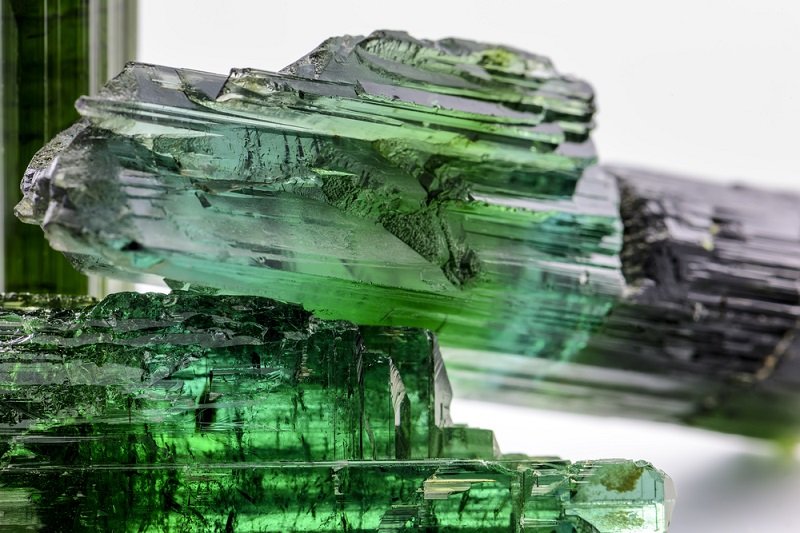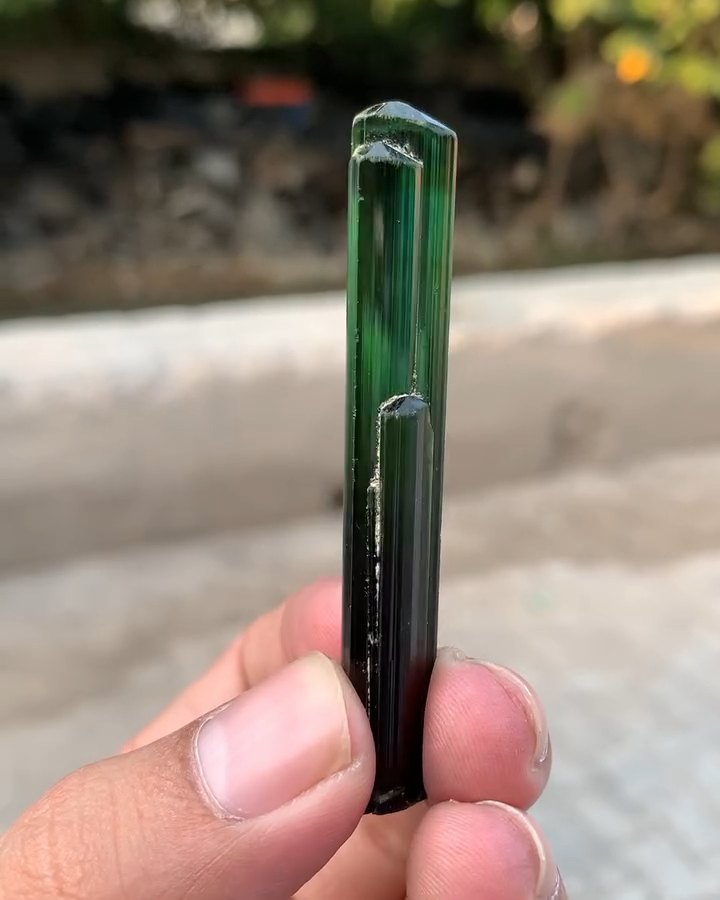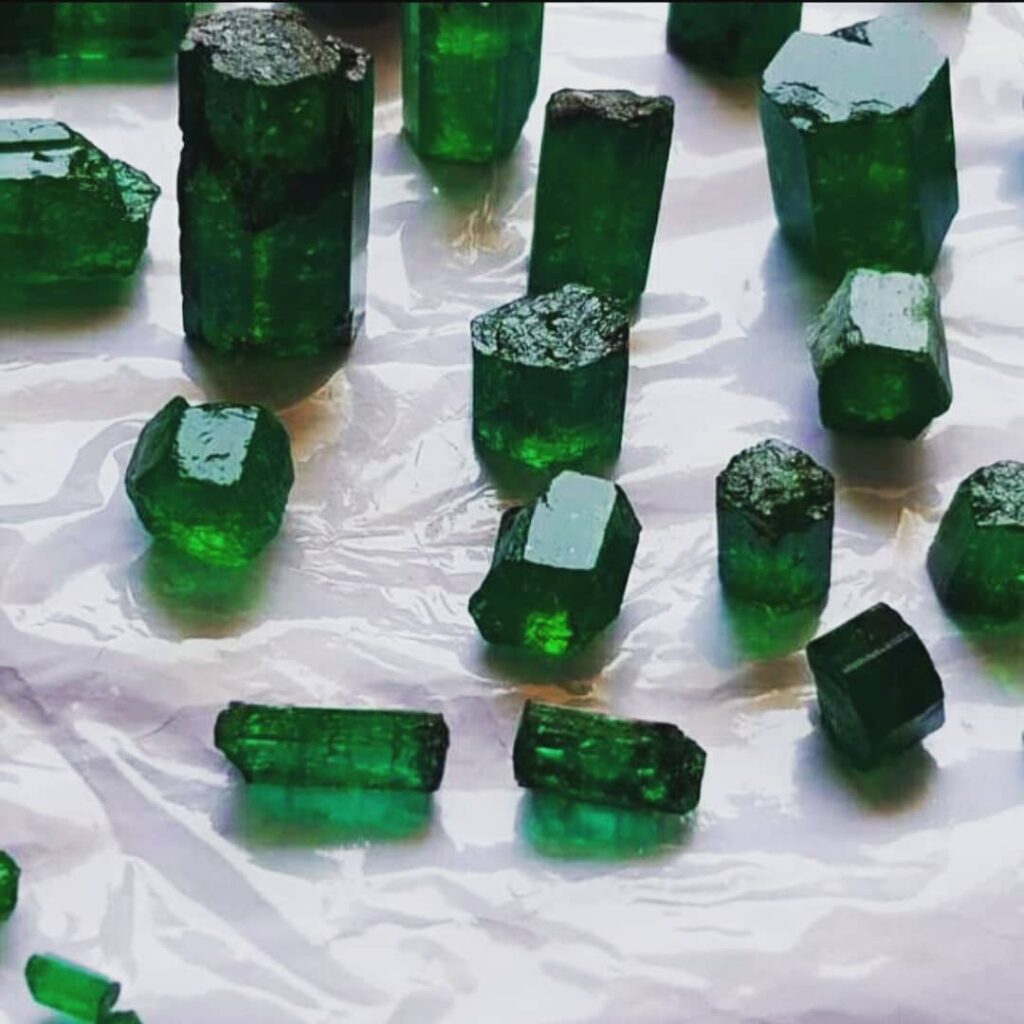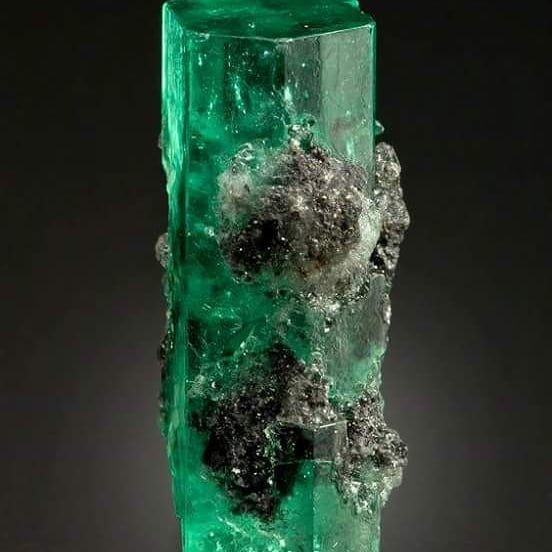Do you know why this green tourmaline has a hexagonal shape instead of its classic trigonal shape?
The reason is that the mineral in the image isn’t tourmaline at all. It’s actually emerald.
This is a great example of how understanding a mineral’s crystal growth pattern can help you identify it, or at least know what it isn’t.
Let’s take a closer look at the differences of Emerald and Green Tourmaline:
Green Tourmaline

Green tourmaline, part of a larger group of tourmaline minerals, can range in color from light to dark green and sometimes shows a gradient or bi-color appearance with transitions to other colors like pink or blue.
What makes green tourmaline particularly interesting is its wide range of color variations and the presence of visible inclusions that can enhance its character.
It rates a 7 to 7.5 on the Mohs hardness scale, making it durable enough for various jewelry applications.
Its crystal structure allows for pleochroism, where the stone can appear to be different colors when viewed from different angles.

Tourmaline Characteristics
Classification: Cyclosilicate mineral
Chemical Composition: Complex borosilicate with elements such as aluminum, iron, magnesium, sodium, lithium, or potassium
Color: Various shades of green, from light to deep green
Streak: White
Hardness: 7-7.5 on the Mohs scale
Cleavage: Indistinct
Fracture: Conchoidal to uneven
Luster: Vitreous
Transparency: Transparent to translucent
Crystal System: Trigonal
Emerald
Emerald, on the other hand, is a variety of the mineral beryl and is most prized for its deep, vivid green color. The color of emerald is primarily due to trace amounts of chromium (and sometimes vanadium).
Unlike green tourmaline, emeralds are almost always included, which can give them a “jardin” or garden-like appearance due to the internal fractures and mineral inclusions.
They have a hardness of 7.5 to 8 on the Mohs scale, but their frequent inclusions can make them less durable. Emeralds are particularly valued for their color saturation and are among the most sought-after precious gems.
Emerald Characteristics
Classification: Beryl variety
Chemical Composition: Be₃Al₂Si₆O₁₈ (beryllium aluminum silicate) with chromium or vanadium
Color: Various shades of green, often deep green due to chromium and/or vanadium
Streak: White
Hardness: 7.5-8 on the Mohs scale
Cleavage: Imperfect in one direction
Fracture: Conchoidal to uneven
Luster: Vitreous
Transparency: Transparent to translucent
Crystal System: Hexagonal
How Are These Two Stones Similar?
Both of these stones are close to the same shade of green. Chrome tourmaline is easy to confuse with chrome diopside and emerald. The metal simply produces the same shades in a variety of crystals.
For those new to minerals: chromium impurities turn things green. It’s just the way that it ends up working out in nature.
Both stones are readily available in both cut and natural forms. Both see their use in jewelry on a regular basis, not just finding their way onto collector’s shelves.
Tourmaline runs from 7-7.5 on the Moh’s scale, while emerald runs from 7.5-8. There’s a bit of overlap in the middle, which makes them hard to distinguish during normal scratch testing. Both will scratch most glass or agate without any trouble but few people are willing to test either in that manner.
- Online rock and mineral club for collectors of all levels!
- Find community with like-minded rock and mineral enthusiasts.
- Monthly Giveaways!
- Free Access to Entire Digital Library of Products (annual memberships)





